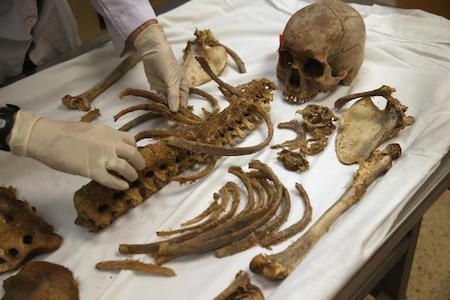Using a new approach to DNA analysis, the 17th century bones of three African slaves have been traced to their countries of origin for the first time, researchers said Monday.
Until now, uncovering the precise origins of the 12 million African slaves sent to the New World between 1500 and 1850 has been challenging, since few historical records exist from the time. Often, the ports from which the slaves were shipped is known, but not the nations from which they came.
The three slaves analyzed for this study came from what is modern-day Cameroon, Ghana and Nigeria, according to the findings in the Proceedings of the National Academy of Sciences, a peer-reviewed US journal.
At first, scientists did not expect to find out much about the remains of two men and a woman that were uncovered in 2010 at a beach-side construction site on the Caribbean island of St. Martin, since they had retained little DNA due to the hot climate.
But using a new approach called whole genome capture, and comparing the DNA found in the bones to reference samples of people from 11 different West African countries, researchers were able to trace the slaves, known as the Zoutsteeg Three because they were unearthed in the Zoutsteeg area of Philipsburg.
They could also tell that one came from a Bantu-speaking area of Cameroon, and the other two came from non-Bantu-speaking areas of Nigeria and Ghana.
“To our knowledge, these findings provide the first direct evidence for the ethnic origins of enslaved Africans, at a time for which historical records are scarce, and demonstrate that genomic data provide another type of record that can shed new light on long-standing historical questions,” said the study led by Hannes Schroeder of the Centre for GeoGenetics at the Natural History Museum, University of Copenhagen.
Equipped with this knowledge of how to narrow down genetic histories even when DNA is scarce could boost research on other poorly preserved archeological remains found in tropical settings, the study added.
“Our study underscores the value of whole-genome capture methods for ancient DNA research. These new methods enable us to use samples that were previously thought to be beyond our reach.”
Source: GhanaWeb













